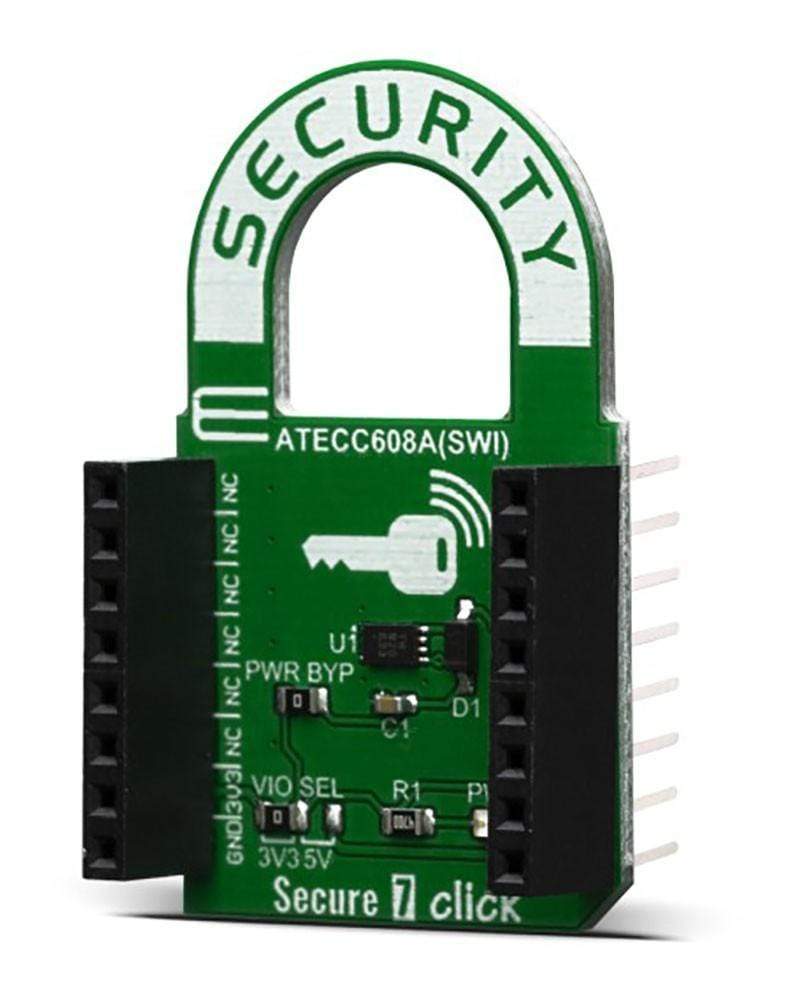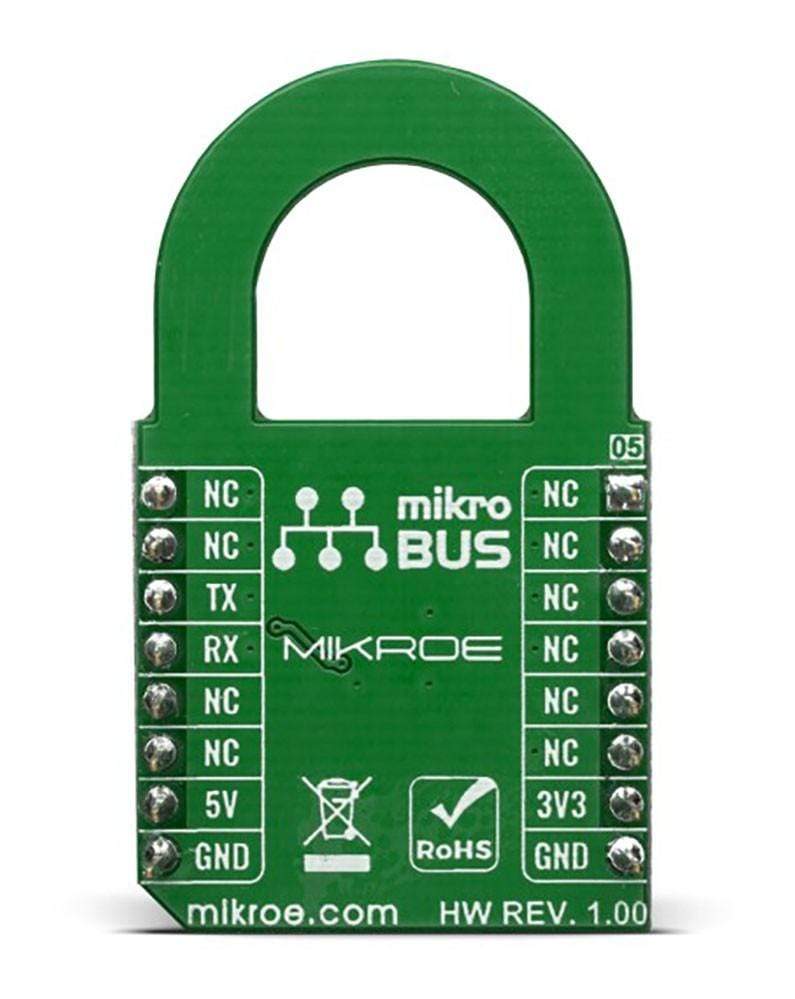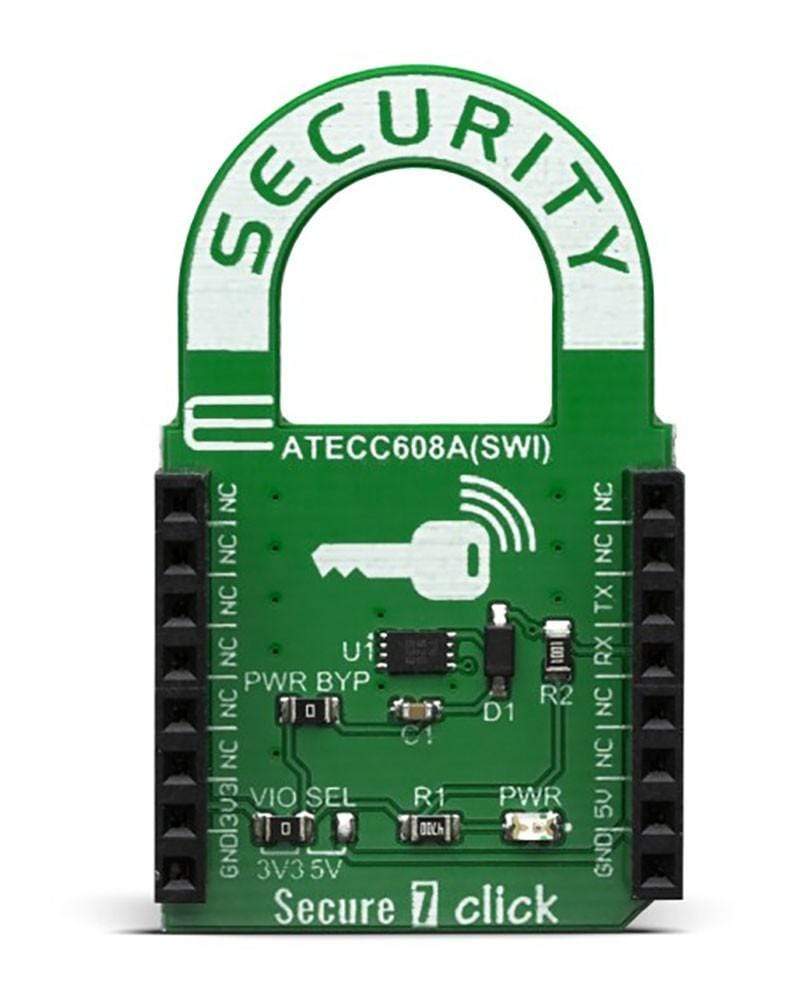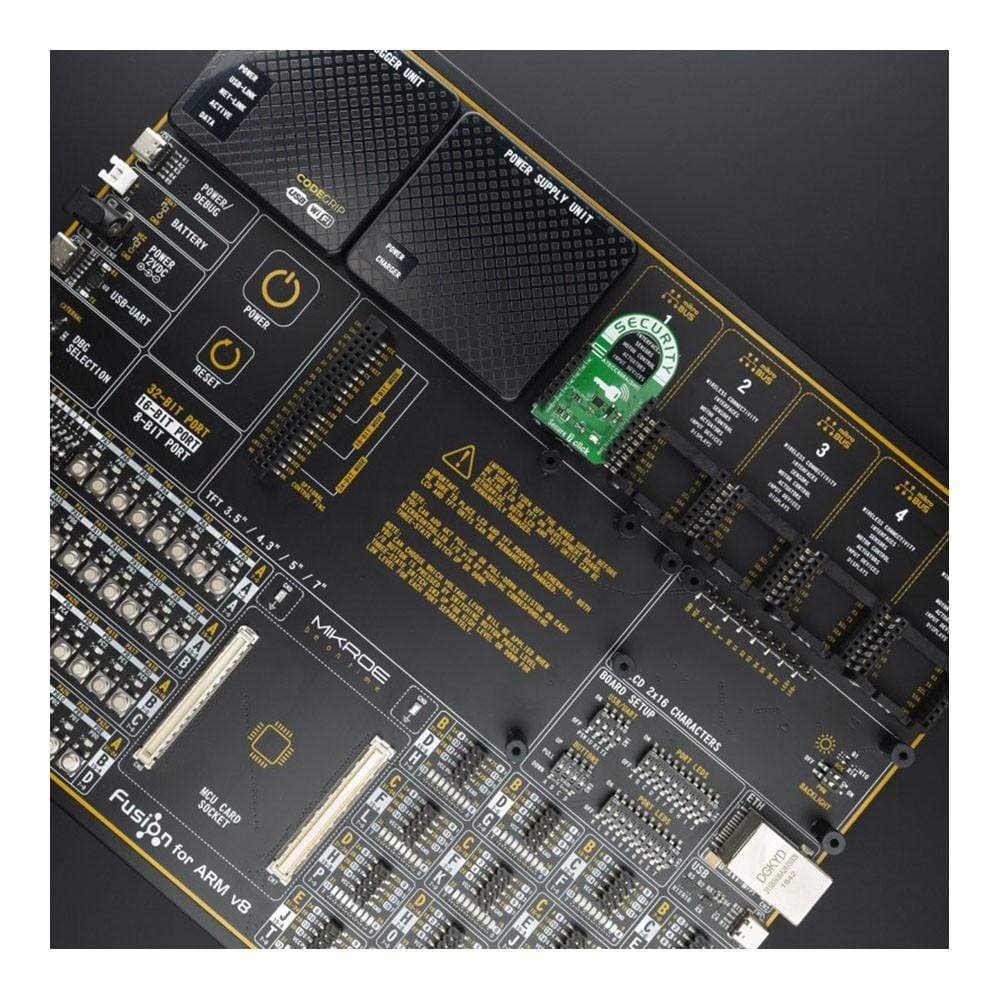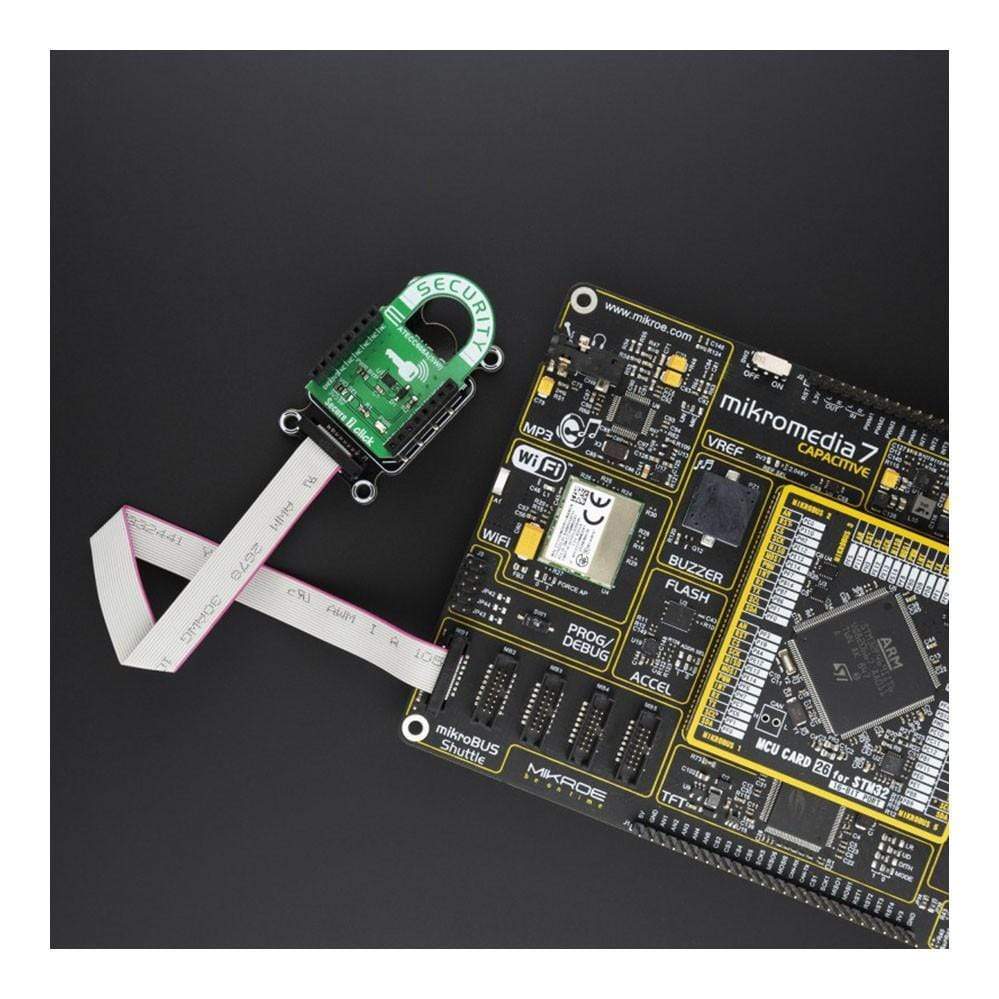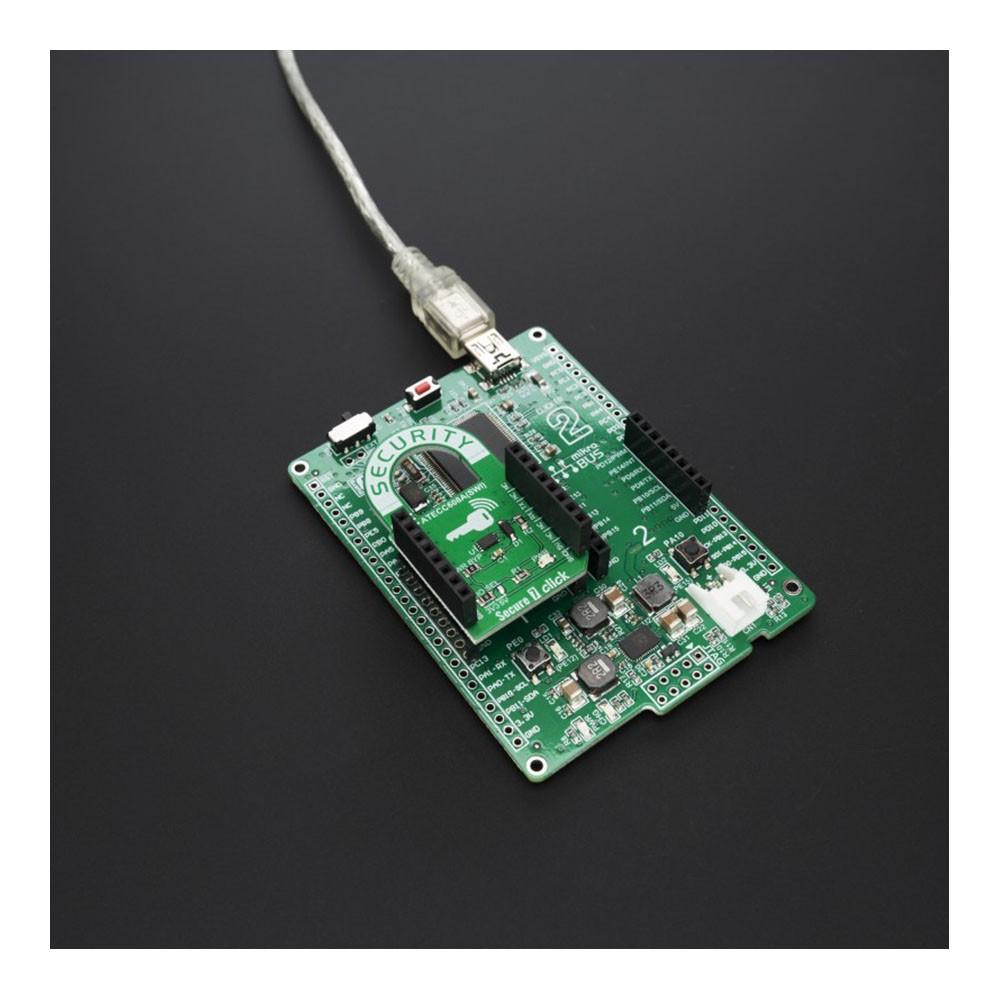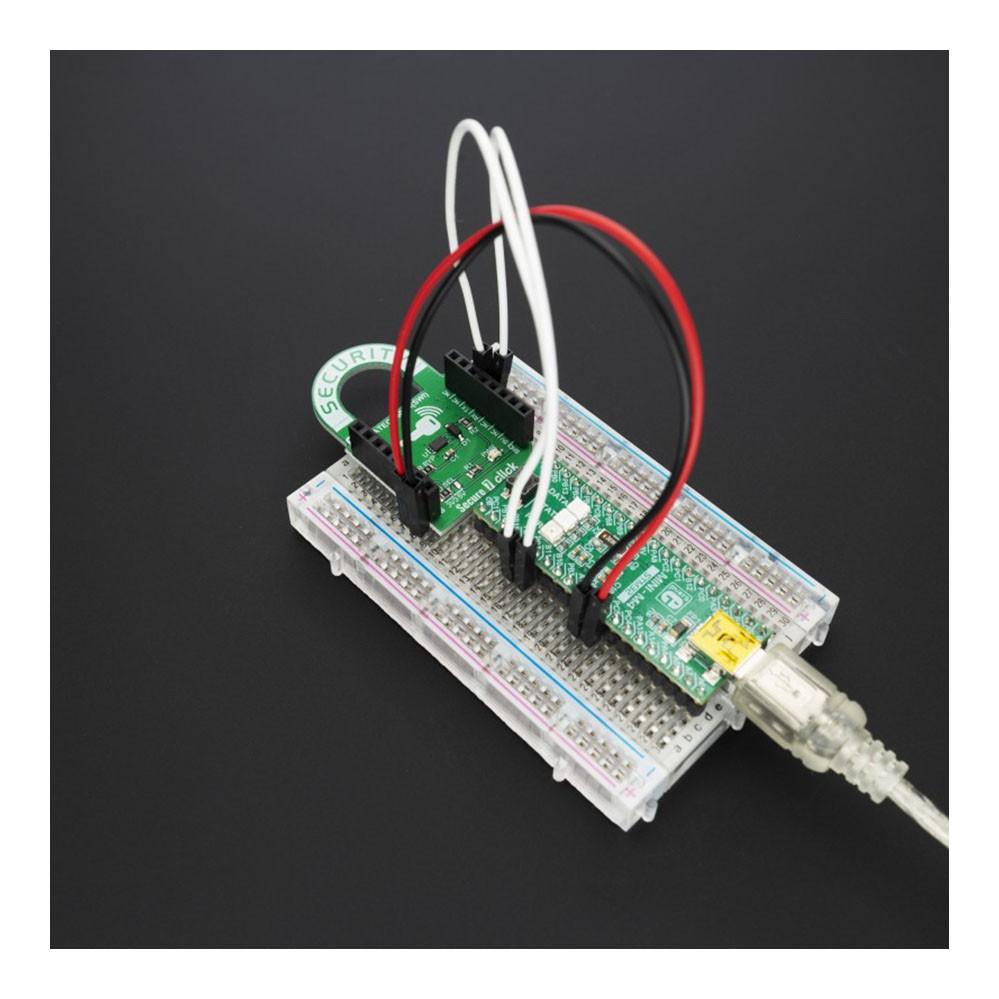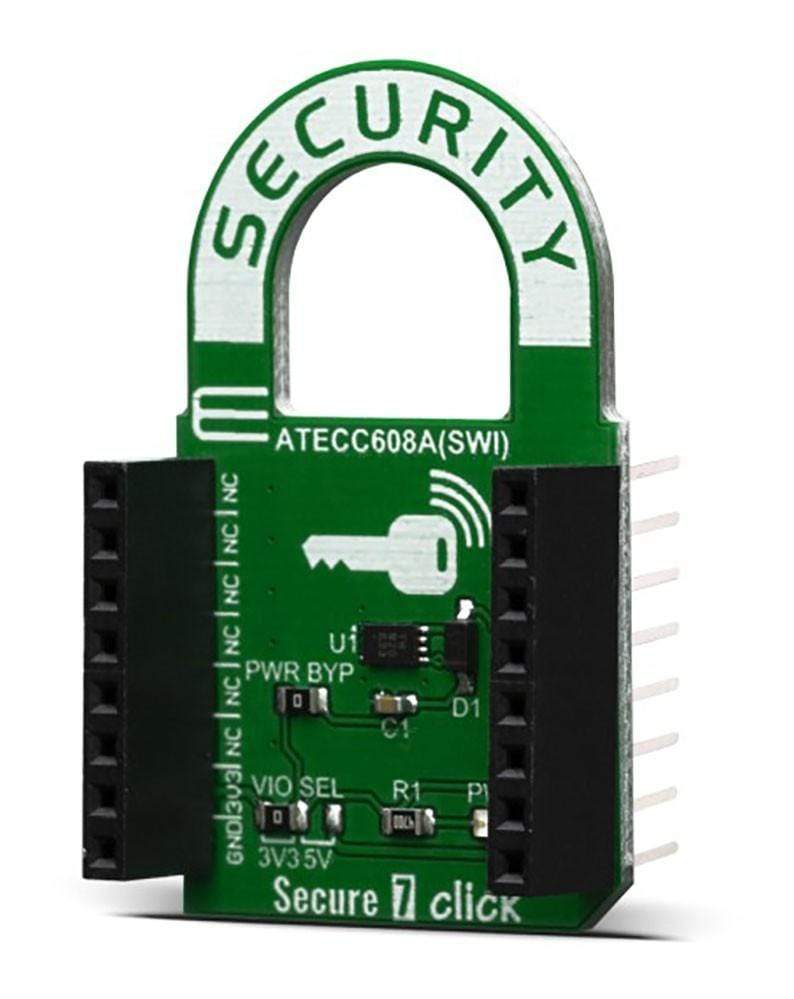
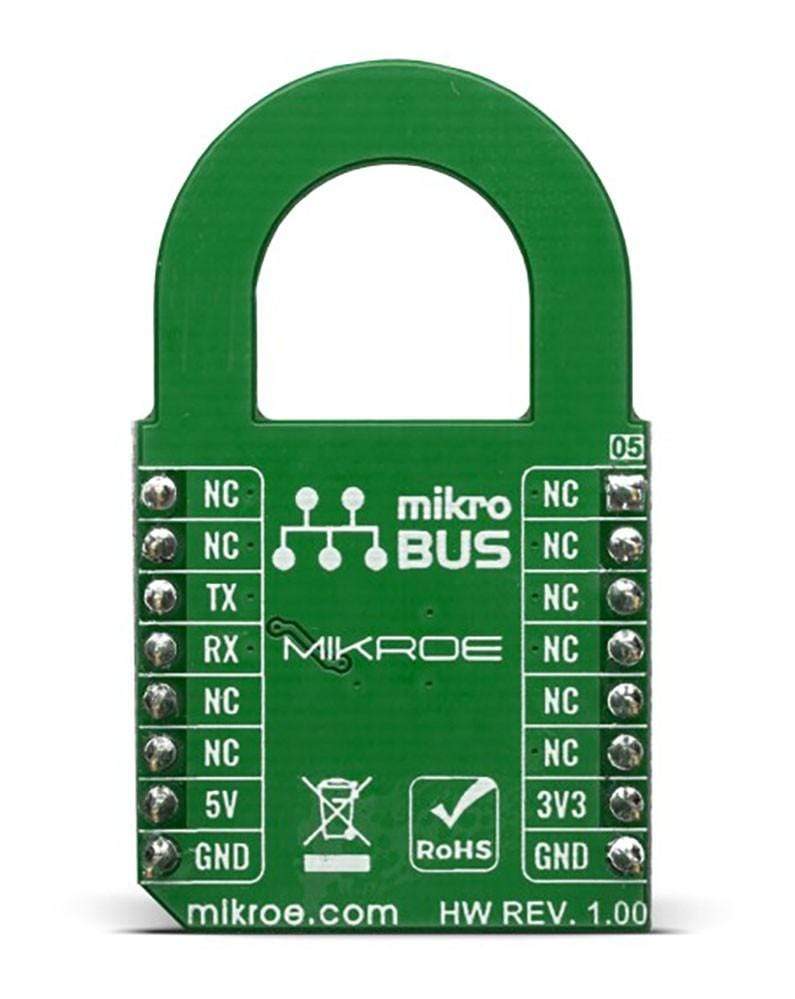
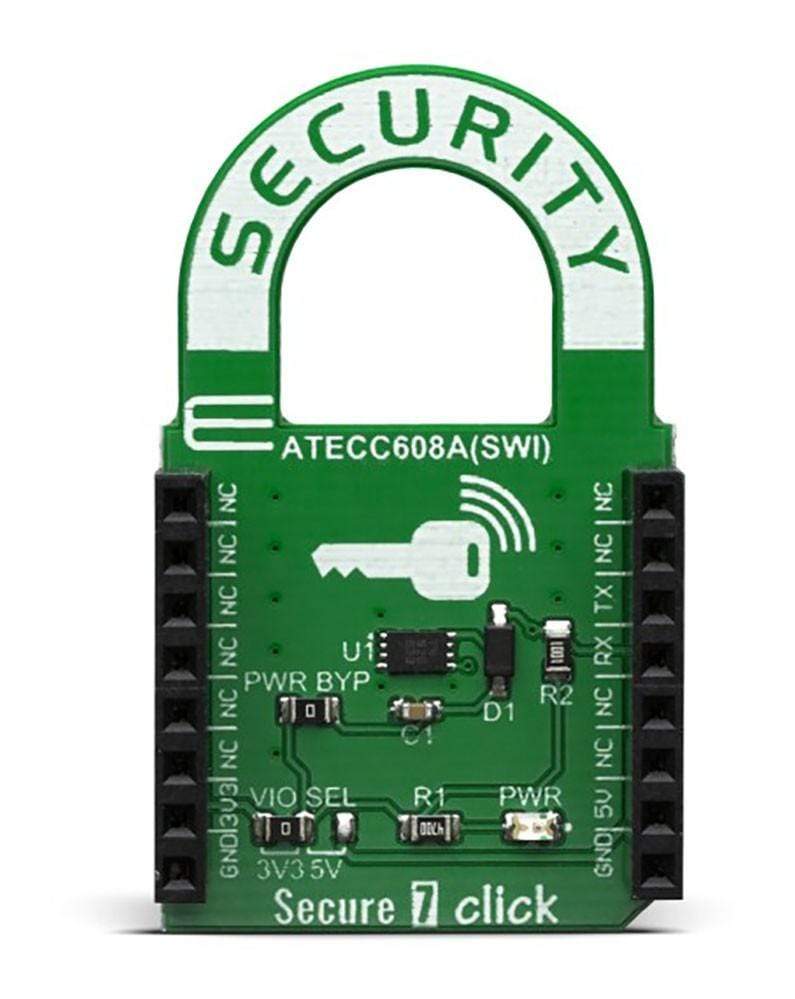
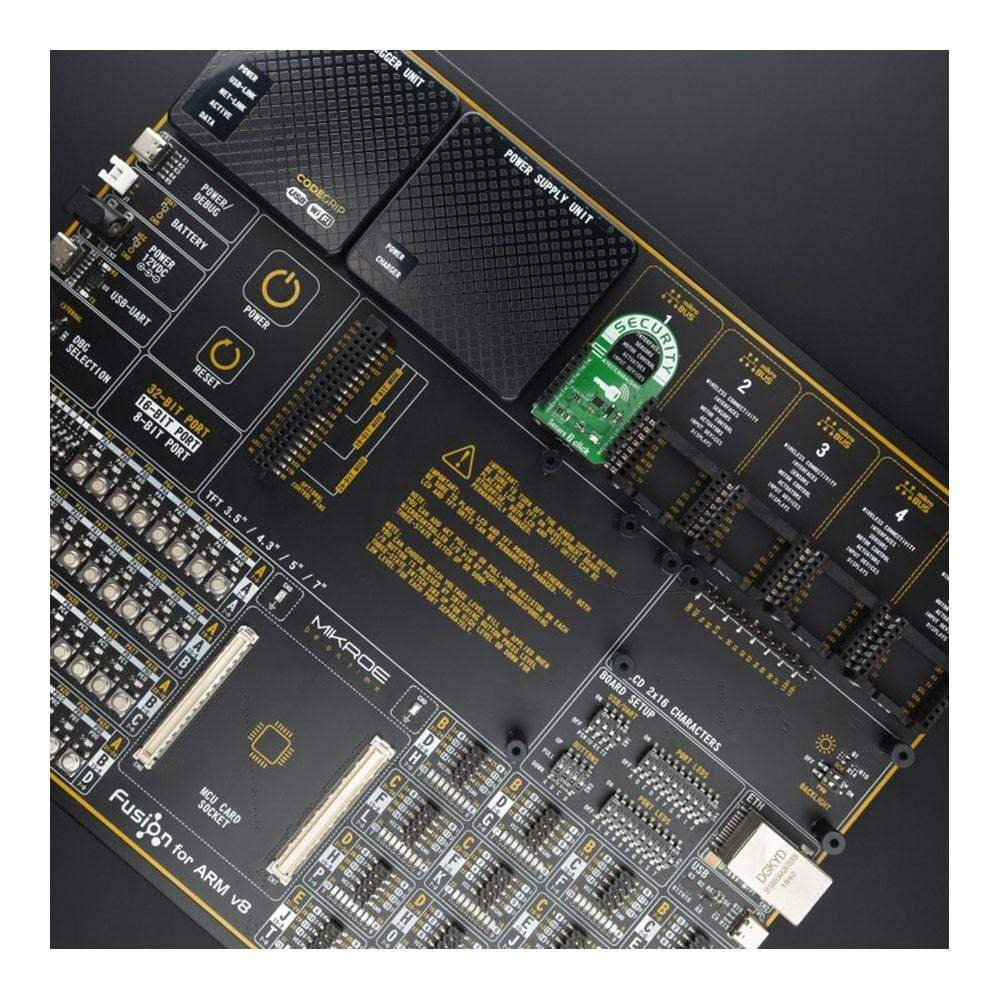
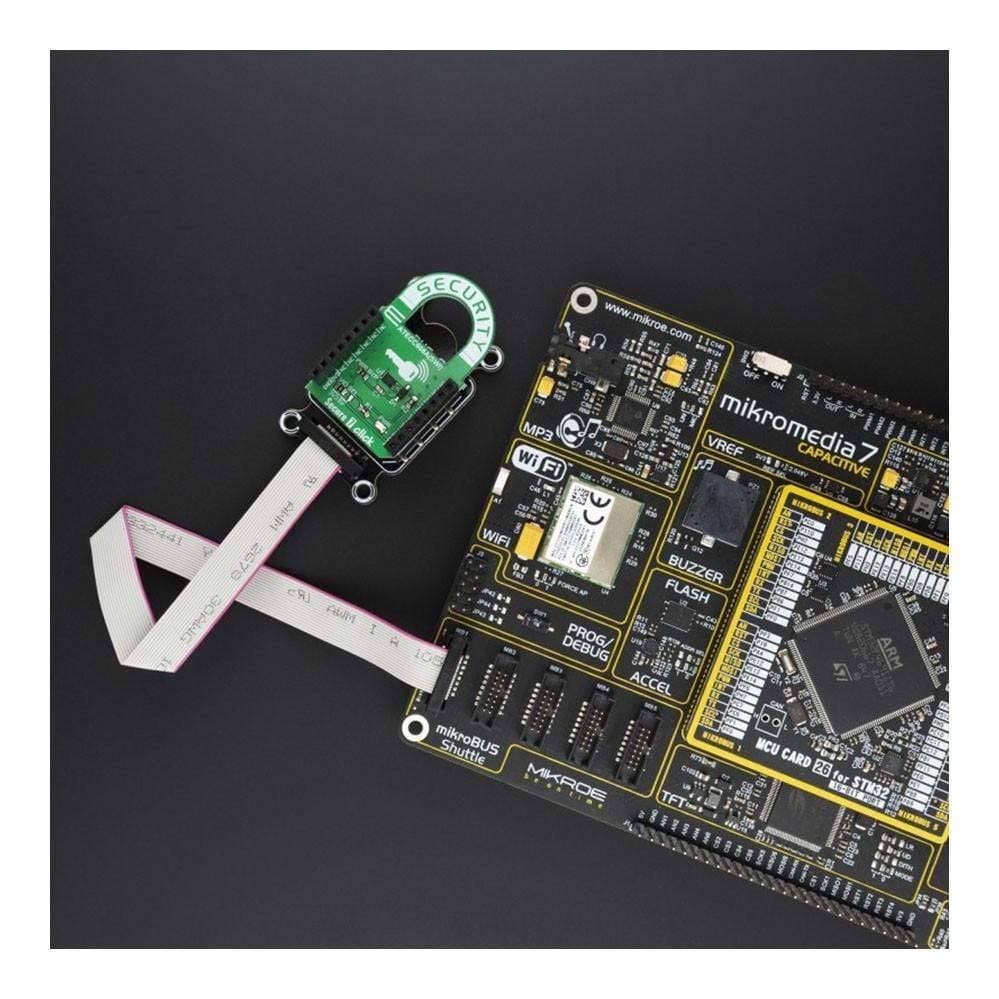
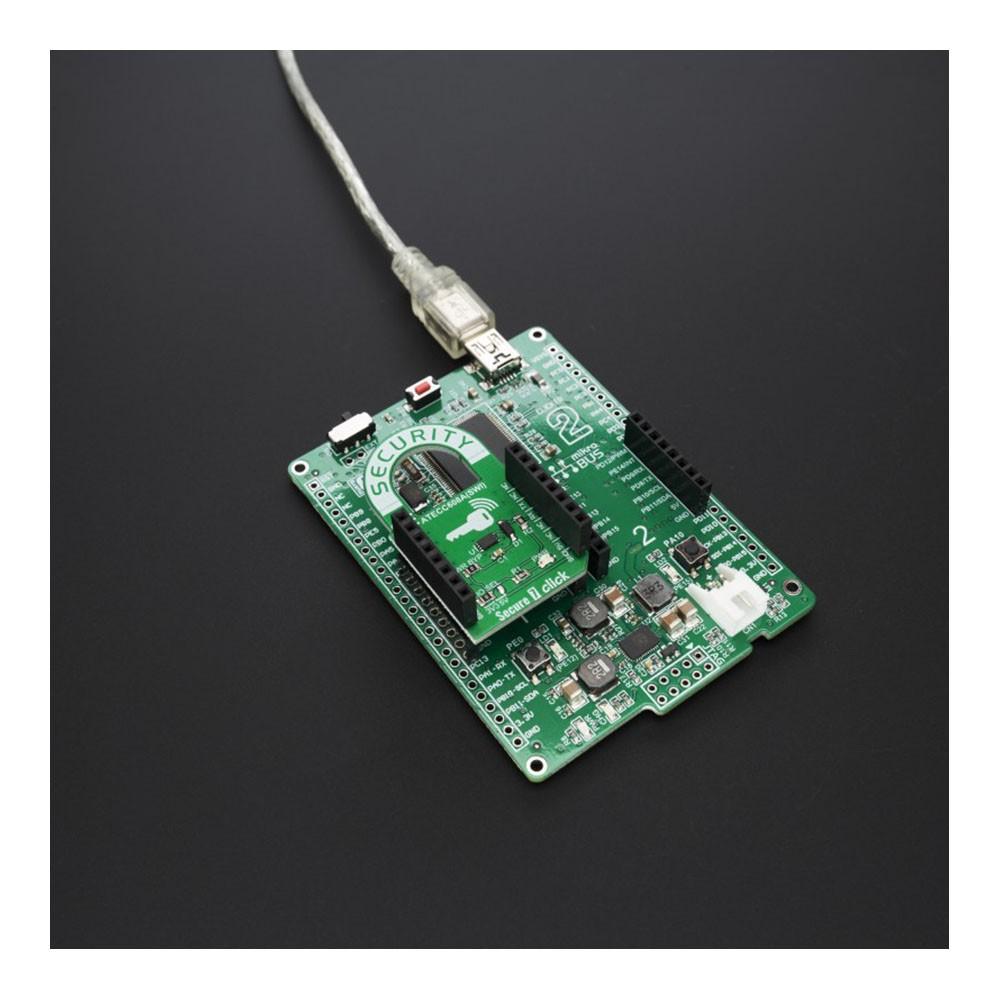
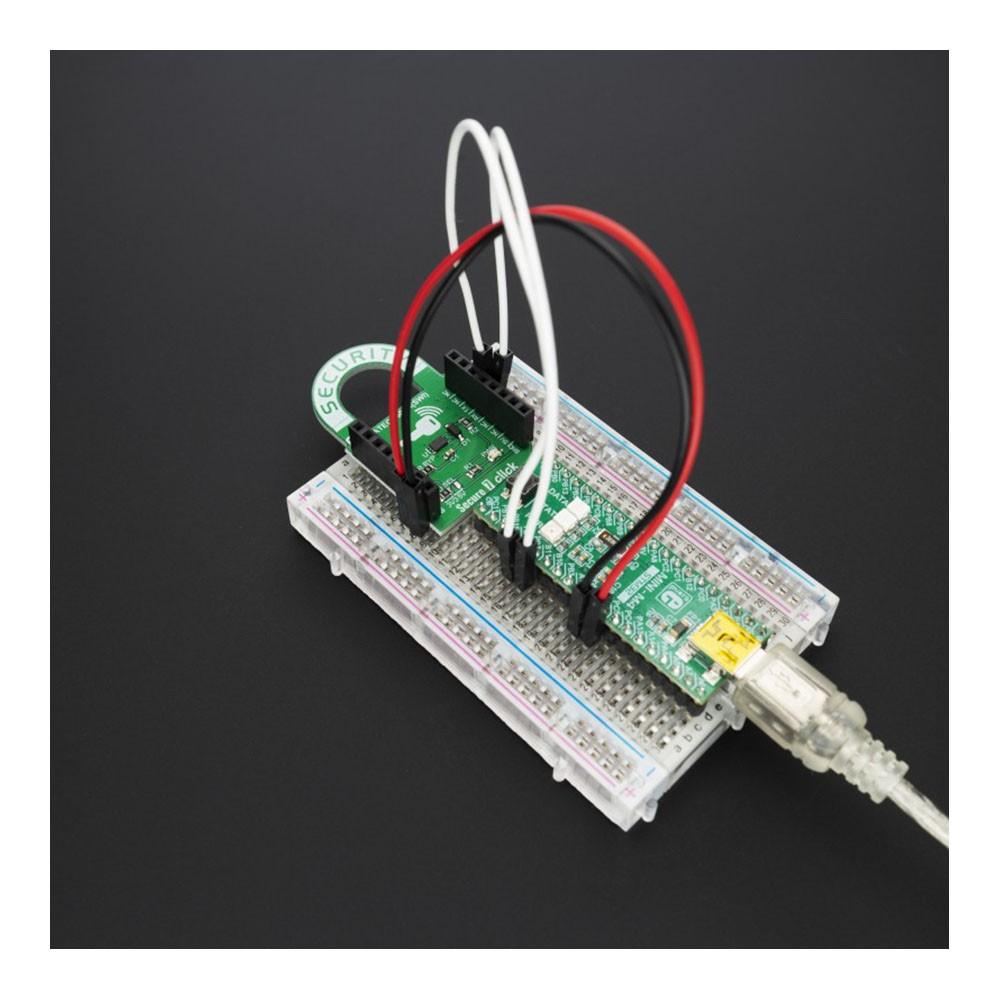
Overview
The Secure 7 Click Board™ carries the ATECC608A cryptographic coprocessor with secure hardware-based key storage, from Microchip. The ATECC608A includes an EEPROM array which can be used for storage of up to 16 keys, certificates, miscellaneous read/write, read-only or secret data, consumption logging, and security configurations. The ATECC608A equipped on this Click Board™ supports the SWI interface with a flexible command set, that allows use in various security applications, including Network/IoT Node Endpoint Security, Secure Boot, Small Message Encryption, Key Generation for Software Download, Ecosystem control, Anti Counterfeiting and similar.
The Secure 7 Click Board™ is supported by a mikroSDK compliant library, which includes functions that simplify software development. This Click Board™ comes as a fully tested product, ready to be used on a system equipped with the mikroBUS™ socket.
Downloads
Le Secure 7 Click Board™ est équipé du coprocesseur cryptographique ATECC608A avec stockage de clés sécurisé basé sur le matériel, de Microchip. L'ATECC608A comprend une matrice EEPROM qui peut être utilisée pour stocker jusqu'à 16 clés, des certificats, diverses données en lecture/écriture, en lecture seule ou secrètes, la journalisation de la consommation et les configurations de sécurité. L'ATECC608A équipé sur ce Click Board™ prend en charge l'interface SWI avec un ensemble de commandes flexible, qui permet une utilisation dans diverses applications de sécurité, notamment la sécurité des points de terminaison des nœuds réseau/IoT, le démarrage sécurisé, le chiffrement des petits messages, la génération de clés pour le téléchargement de logiciels, le contrôle de l'écosystème, la lutte contre la contrefaçon et autres.
La carte Click Board™ Secure 7 est supportée par une bibliothèque compatible mikroSDK, qui comprend des fonctions qui simplifient le développement logiciel. Cette carte Click Board™ est un produit entièrement testé, prêt à être utilisé sur un système équipé du socket mikroBUS™.
| General Information | |
|---|---|
Part Number (SKU) |
MIKROE-3915
|
Manufacturer |
|
| Physical and Mechanical | |
Weight |
0.017 kg
|
| Other | |
Country of Origin |
|
HS Code Customs Tariff code
|
|
EAN |
8606018719082
|
Warranty |
|
Frequently Asked Questions
Have a Question?
Be the first to ask a question about this.

